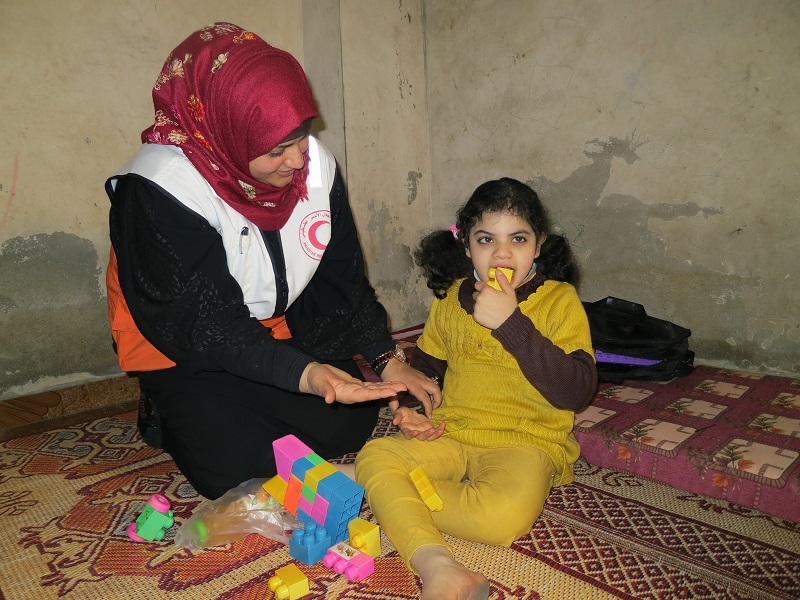
By Hanne Sorine Sorensen, IFRC
More than 500 children were killed during the latest round of violence in the Gaza Strip, but the Palestine Red Crescent Society managed to save many young lives throughout the conflict and continues to assist children still suffering from physical harm caused by rocket fire. Although these children will never be able to live a normal life, the National Society’s assistance makes their lives more bearable.
At the Palestine Red Crescent Society’s Al Amal Hospital in Gaza’s Khan Younis, doctors are doing what they can to rehabilitate the children who, more than six months after the conflict, are still hospitalized.
Four-year-old Ameen El Mahmoud was wounded in an explosion on 1 August 2014. A Shrapnel caused a complete cut to his spinal cord. His lower body has become paralysed. After Ameen was wounded, he was treated at the Al Amal Hospital, but due to his severe condition, he was later transferred to a hospital in Turkey. Now he is back at Al Amal after going under treatment for four months in Turkey.
“He will be in a wheelchair for the rest of his life,” says Dr Tareq El Hefny, who is the Head of the Rehabilitation Department at Al Amal Hospital. Dr El Hefny explains that Ameen has been very depressed, but that he has now started talking.
“We are teaching him how to use the wheelchair and how to move from the bed to the wheelchair. Later we will teach him how to empty the catheters as he cannot control neither urination nor stools. We try to train him to live with the disability,” explains Dr El Hefny.
At the hospital Ameen is also taught how to train his arms to properly handle the wheelchair, and both the child and his family are getting psychological support from the Palestinian National Society.
In the same ward of the hospital, but in a different room, lies six-year-old Muhammed Abu Haddaf. Muhammed’s head and body were hit by several shrapnels on 8 August 2014. When he was rescued from under the rubble, he was still conscious, but after a while he fell into a coma from which he has not recovered yet.
Like Ameen, Muhammed was transferred for treatment in Turkey where the doctors gave up on operating on him although he suffered several injuries in his head, chest and abdomen.
His eyes wide open, Muhammed doesn’t seem to know where he is or what has happened to him. His father Saleh Ayesh holds his hand and plays Muhammed’s favorite music which brings occasional smiles on the kid’s face.
“We don’t know whether he will ever recover from the coma and we can see that when in physiotherapy, he is in severe pain but we can’t talk to him. We have started a comprehensive rehabilitation programme to aid both the child and his family with psychosocial support and physiotherapy,” says Dr El Hefny.
As for eight-year-old Besan Daher, she wouldn’t have been alive had it not been for Alaa Abu Sheera.
Alaa Abu Sheera has been a Palestine Red Crescent Society volunteer for six years and has been active on the ground through all the latest three armed conflicts in Gaza.
“I spent two hours digging to rescue Besan. She spent a total of 10 hours under the rubble, after her house was destroyed and her entire family of eight was killed,” says Alaa Abu Sheera.
Besan, who has a huge scar on her face where a shrapnel hit her, now lives with her uncle, his wife and their five children.
“I stay there because my entire family was killed. My mother was reading the Koran aloud when we were attacked. I don’t know why we were attacked, but I remember somebody moving stones away from my body and taking me to the hospital. I felt like an orphan,” says Besan, who aspires to become an English teacher.
Why?
“Because I am good in English and because I would like to talk to foreigners and tell my story,” says Besan.
End.